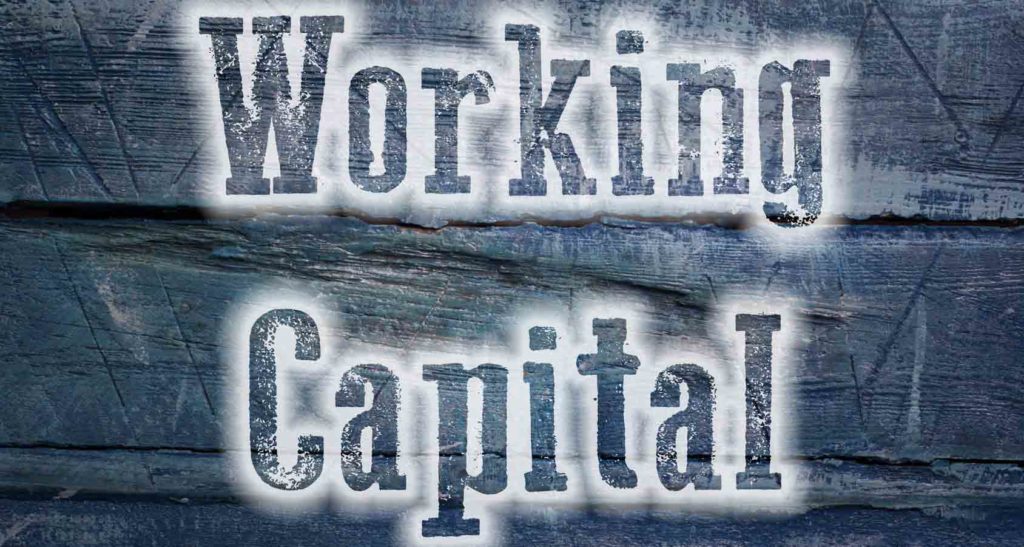 Business owners are concerned about their bottom line. Naturally, they are looking to generate a profit on their income statement. However, to stay in business in the long term, companies must also weather short-term cash fluctuations. This requires sufficient working capital to stay solvent throughout the year. Here are the various components of working capital.
Business owners are concerned about their bottom line. Naturally, they are looking to generate a profit on their income statement. However, to stay in business in the long term, companies must also weather short-term cash fluctuations. This requires sufficient working capital to stay solvent throughout the year. Here are the various components of working capital.
What Is Working Capital?
Working capital is the money your company needs to finance daily operations. Businesses have to pay rent, utilities, and other expenses related to keeping their doors open. They must make payroll, and they also have to have sufficient funds to order goods or raw materials from their suppliers. All of this requires cash or working capital.
Working Capital Management Areas:
- Accounts Receivable: open invoices and money owed to your company
- Accounts Payable: bills and payments your company owes
- Inventory: product you have on hand, can be wasteful if you have excess inventory
The money to pay for operating expenses comes from the profits the company generates. The only problem is that your customers or clients may not pay you as soon you invoice them. In fact, they could have payment terms that allow them to pay you 90 days after they receive the goods. During that time, your company must still pay the current expenses to keep generating more profit.
Components of Working Capital
The amount of working capital is the difference between your current assets and your current liabilities. For individuals, it’s about how much money they have in the bank to pay their current bills. For a business, it’s a little more complicated. You must understand what type of assets and liabilities you have, and whether they can cover your cash needs.
Here are some examples of current assets:
- Cash
- Receivables
- Short-term investments and advances
- Prepaid expenses
- Inventory of raw materials, work-in-progress, and finished goods
 On the other hand, you have current liabilities, which are expenses that must be paid during this inventory cycle.
On the other hand, you have current liabilities, which are expenses that must be paid during this inventory cycle.
Here is a list of some of these liabilities:
- Payroll
- Invoices for goods or raw materials
- Outstanding expenses
- Short-term debt
- Taxes or dividends
It’s important to understand the timing of your cash flow. It’s not enough to turn a profit at the end of the current operating cycle, but you must also be able to meet your company’s cash needs for current liabilities when they’re due.
How to Calculate Working Capital:
It’s not a bad idea to have a complete financial picture for the full accounting year to ensure that your assets will exceed your liabilities. However, it’s even more important to understand your payment cycles. For example, how long does it take until you get paid after you send an invoice? How long does it take from the time you order raw materials until you can sell them? Understanding your cash flow cycles and the various components of calculating working capital will help you understand and meet your cash needs.
Your working capital calculations will rely on the credit terms you dictate with your customers. Lengthy credit terms can strain your cash flow and make it harder to have available working capital to meet your liabilities. This means that your working capital will be tied up in accounts receivable rather than on hand to make more sales.
How to Increase Your Small Business Working Capital:
Falling behind on rent, utilities, payroll, taxes, or loan repayments will only increase the financial strain on your business. This makes increasing your available working capital very important for a business owner. One way to increase your working capital is by trimming costs in your business and cutting back on the value of your liabilities. Another way to improve your working capital is through small business financing. Be sure to choose a financing method that improves your cash flow instead of hurting your cash flow. Eagle Business Credit is an invoice factoring company. Factoring services are a reliable method of improving cash flow and creating more available working capital to help support the financial needs of a small business or growing business. It’s important to think about working capital for your business in Columbus, GA.

